REVIEWS: Next Stage Festival explores a wide range of stories and styles
Over the past several years, Intermission and the Toronto Fringe Festival have partnered on the New Young Reviewers program, a workshop series and writing group for emerging theatre and performance reviewers across Canada (led by Signy Lynch and Stephanie Fung).
For this iteration of the program, students enrolled in Lynch’s theatre criticism course in the University of Toronto Mississauga’s department of English and Drama attended the Next Stage Festival to flex their developing critical skills.
Below you’ll find a round-up of the New Young Reviewers’ Next Stage reviews.
Gemini
Reviewed by Ahla Arain
Warning: This review contains spoilers.
In the days and nights since seeing Gemini, the spectacular storytelling has stuck with me. The play spans three years of emotions, centering characters named Jules and Ben. I was utterly lost for words at the betrayal I felt by the end of it — truly, nothing could capture the weep stuck in my throat for what Jules loses. Perhaps that’s feminine solidarity at work, or the understanding of the cruelty that comes with burnt relationships.
Jules, portrayed by playwright Louise Casemore, is witty, energetic, and full of life; a bartender with countless former jobs, she’s got a sharp tongue and is effortlessly funny. Throughout a captivating 90 minutes, we are shown her hardships, successes, and failures, all through conversations that up to the big day at the bar where Ben, a regular played by Vern Thiessen, is doing a reading of Gemini, a book he wrote years ago as his wife was fading away.
The stage is set up as a bar, with audience participation sprinkled throughout the present-day scenes at the reading. Jules walks around topping up drinks, collecting cups, and even doing a (water) shot with one lucky audience member. We quickly notice that her and Ben’s relationship is a bit standoff-ish, and with a change of lights we are transported back to when she first started out as a bartender.
Over the course of the play, we follow Jules through a series of memories: First meetings, holidays, and service industry anecdotes flit by as we watch a friendship blossom. Casemeore, as a writer and performer, wonderfully draws us into this little bar through crossword puzzles, discourse on cats, and hating the ever-changing neighbouring establishment.
Thiessen is remarkable as Ben, a character we are often cautious of but learn to love through the eyes of Jules. He takes time to warm up to her, and it takes the audience time to warm up to him in return. His grumpy old-man attitude comes naturally to him, and throughout the play we’re deceived by how well we think we know him.
As the days go by and their relationship grows, we get this eerie feeling through gifts, hugs, and impromptu duets, that Jules finds stability within their day-to-day interactions, while Ben sees a reflection of his wife.
The final 15 minutes of the play are utterly shocking. I sat there wide-eyed and speechless at what had just unfolded.
Casemore does a fantastic job at leaving the audience with more to think about than when they first came into the theatre. Gemini is a must-see for everyone, a true social commentary that will leave you in awe.
PRUDE
Reviewed by Avery McMillan
Get comfortable, but not too comfortable, because the King of the Party is about to teach you how to have a good time. Step one: Look hot. Step two: Get fucked up. Step three: Find someone to hook up with, and fast.
Told through a mix of stand-up and lip-syncing, PRUDE is a solo creation written and performed by Lou Campbell, who goes from instructing the audience how to party to falling apart onstage and revealing their asexuality. At one point, they say that sex is not just what you do, it’s who you are. But ultimately, the King of the Party discovers who they are beyond sex: Arguably, still the King of the Party.
The removal of costume pieces designed by Everette Fournier accompanies the King of the Party’s character development. First go the sleeves and cape, and then the strap crown comes off, leaving just a full-body pink unitard. In this state of vulnerability, the King of the Party lets the audience in even more.
The Cabaret space at Buddies in Bad Times Theatre offers seating around tables, at bar stools, and in more traditional seats near the stage. The size of the space provides casual intimacy with the performance onstage. Campbell also enters the audience on several occasions, and invites audience members to come and go as needed.
PRUDE is as interactive as it is funny (and it is funny — particularly the “things that make me horny af” sequence). The King of the Party initiates call-and-response, and asks questions of the audience. For example, “What do you like better than sex?” To which, at the performance I attended, the replies were reading a book and baking a rhubarb pie. Laughter, too, is a form of interaction, and there is much laughter throughout the 50 minutes that make up PRUDE.
The lighting is predominantly pink and red, colours commonly associated with love and passion. To me, their significance in PRUDE is in communicating that potent feelings are still possible in the absence of sex.
Peter Sarty’s sound design accentuates the King of the Party’s performance, from moments of triumph to the pain of being serenaded.
What immediately caught my eye was the minimal set: A microphone, a chair, and a board of plywood on the floor whose purpose takes a while to be revealed. Despite this sparseness, a multitude of significant props are hidden onstage, and as the piece progresses they come out to play in increasingly satisfying ways.
In order to fully express asexuality, in which the body is meant for dancing, not sex, the King of the Party slowly adopts a non-human, Sim-like form. This partially conveys how sexuality has become so attached to personhood: In a lot of ways, it’s who you are.
PRUDE shines in the way that it makes the awkward relatable. So, fully submit to the party, whatever that means to you.
I Was Unbecoming Then
Reviewed by Anya Reynolds-Swannie
This ain’t your grandmother’s glee club.
I Was Unbecoming Then, a new musical playing in the Chamber space at Buddies in Bad Times Theatre, combines a familiar world of teen angst with the more unfamiliar land of a capella choral arrangements.
Set in a bare-bones music room in North Vancouver, the altos and sopranos of a high school choir balance on the trapeze wire of girlhood, before being struck by a community tragedy — all while preparing for a national competition in the revered town of Banff, Alberta. The show’s form consists of short scenes and monologues thoughtfully crafted by Lyndsey Bourne, and choral pieces created by Sam Kaseta and Bourne (music and lyrics, respectively). The cast traverses between the spoken and the sung in tight choreographies of conformity arranged by director Ilana Khanin.
From the get-go, the set and staging make it easy to visualise oneself as part of the choir. Two large, off-white carpets accompanied by two stand-up lights are the only elements that make up the set, designed by Echo Zhou 周芷會. At first, I thought the simplicity was merely a symptom of a low budget, but as Unbecoming continued, it became evident that the design is meant to behave as a frame for the complex stage pictures that soon take shape.
As the choir comes alive, they begin to shift in mechanical directions, strictly following each other’s impulses. When moving as a unit, the effect is a stark reflection on the pressure to adhere to the status quo that is uniquely strong within a group of girls. The ever-present (yet invisible to us) gaze of choir director Bruce only exaggerates this rigidity; the girls police themselves and each other for his favour in a way that those who have struggled with internalized misogyny will almost certainly find familiar.
The songs are a further act of conformity, but with a different significance: as the girls rally around a single topic, their union is often an act of strength and solidarity rather than an adherence to social pressures. The songs subvert expectations surrounding choir music — a genre that some may see as pretentious or old-school — through peppy and contemporary lyrics. It’s clear the young women find solace and freedom in these pieces, uplifting, blending, and melding with each other to create moments of great beauty.
As the musical progresses, the girls have chances to break free of their unison. These breakouts, which mostly take the form of short monologues, are explosions of utter honesty and vulgarity. The choristers burst forth in vivid colours with uncensored thoughts on sex, school, and the ever-present pull to unleash the beast in a world which demands nothing but submission from its young women. Grace Rockett is a particular standout in the role of Anna; she delivers some of the most squirm-worthy lines with such conviction she had the entire audience rolling with laughter (and, strangely, empathy).
Annika Hansen as Lucille, as well, skillfully tackles Bourne’s heightened text to deliver an incredibly heartfelt confession near the end of the show; it encapsulates all the ridiculous yearning that goes into loving someone else by mixing large notions of devotion with the most minute. The effect was not only hilarious, but touching, too.
I Was Unbecoming Then lays its heart on the stage for all to see. It will be deeply relatable to choir kids (like this former Alto Two), to women living and breathing and singing under the thumb of an invisible man, and to anyone who’s ever felt like a bit of a monster — but only for feeling too much.
Civilized
Reviewed by Shannon L. Campbell
Self-described as a “biting, unfunny comedy,” Keir Cutler’s Civilized reflects on the Canadian residential school system by looking through the eyes of the government that ran it. The monologue performance stars John D. Huston as the fictitious William Blank, a high-up employee at the department of Indian Affairs in Wilfrid Laurier’s government and, as he so claims, Native expert. After laying out his own experience of being Métis and adopted to a white family at the top of the show, Huston gives a performance that becomes a tongue-in-cheek exploration of the governmental justifications behind the vastly destructive residential schools.
Theatre in the round always comes with sightline issues, but the style, which here combines storytelling and historical lecture with Huston’s endearing charisma, makes the format work (while the show is performed in the Buddies Chamber, which is currently configured as a proscenium, director Paul Hopkins has re-imagined the space with the help of a semicircular row of chairs). A fabric map of Canada marked with numerous residential schools covers the floor of the stage, placing the stolen land quite literally under the heel of Canadian bureaucracy.
At many points in the show, Huston reacts with a gasped shock to various things that we, the audience, do not see — some good, some bad — leaving us sitting in a moment of surprise before hearing the explanation of what’s actually going on. The first time, we wait with bated breath to learn what’s happening, but as this happens more and more, the shock and excitement wanes. One could chalk this up to losing the interest of the audience, but perhaps this is precisely the point. How often does tragedy plague our news and screens? Can the same passion be maintained the nth time a new facet of the same issue arises? In the face of horrific events, it’s not apathy but fatigue that leads to detachment.
While the dramatic approach is refreshing, I walked away wishing the show dove deeper into the content. It acted as a well-rounded introduction to the residential school system, but to many Canadians — even in 2022, when Civilized was first performed — this is the length of information that they already know. And even if there is a theoretical audience member who has managed to still go without learning this history, how likely are they to place themself in this theatre space to have this introductory experience?
And for a play about a history and social issue specific to Native people, this play seemed to have a strong focus on white settlers, and especially white men. Many historical white men were named with their importance and impact described, but the Native groups and people who fought back against this cultural genocide largely go unnamed.
Even the audience address seems to anticipate a white audience — the “we” he speaks of aims to encapsulate himself and the viewers; he most directly says “we did this for you.” Perhaps within the current performance culture this expectation may at times be accurate, but perpetuating this feels contradictory in its alignment with the goal that underscores the show as a whole — to reflect on and consider the harm we may be enabling only because it is expected and accepted in our society.
If the show delved deeper into criticising the violence perpetuated, historically and presently, by white people, this may have worked to its benefit. Ultimately, Civilized left me intrigued by its form and aesthetics, but wishing for more from the content itself.
This Feels Like The End
Reviewed by Emma Benabdallah
Warning: This review contains spoilers.
Have you ever wondered what life would be like if the sun disappeared? Well, of course if the sun actually disappeared, life would cease to exist. But let’s say, somehow, we could go on without our sun: How would the world cope with such an unimaginable shift?
This Feels Like The End, an indispensable new piece by playwright and actor Bonnie Duff, explores this exact question through the interconnected lives of five people in Toronto. A depressed therapist (Tara Koehler), a newly sober devout Christian (Cameron Laurie), an anxious nine-year-old (Jasmine Case), a Finnish reporter (Duff), and her codependent boyfriend (Landon Nesbitt) all depart on individual journeys, with one shared goal — to find a sense of comfort in the midst of chaos.
This play’s ability to connect this varied group of characters through their shared existential dread was unexpectedly comforting. If you’re like me, you spend quite some time thinking about the end of time. I felt seen in my need to control the uncontrollable, and I could feel a sense of unity within the audience. When you take away one thing we all have in common, we don’t seem so different from each other.
While reading up on the synopsis of this show, I couldn’t help but be reminded of a recurring dream I’ve had in the past. I am in my house checking the weather network to find that it is 600 degrees outside. Nobody on earth knows what to do or how long we’ll be alive. It’s obvious to me that these dreams stem from the very real threat of climate change, which has constantly loomed over my head since I attended one of those climate strikes in September 2019, but the general possibility of random sudden apocalypse is something I no doubt dwell on a bit too frequently. That sickening pit in my stomach was exactly what I imagine the characters of This Feels Like the End to be experiencing, and the play does a great job of conveying that sense of eerie hopelessness. This, paired with compelling acting choices and immersive sound and lighting design (realized by Jake Schindler and Mathilda Kane) made it natural for me to relate and identify with each of the characters in the show, despite their differences.
This Feels Like The End gives its audience the opportunity to observe existence through five different lenses that I had hardly considered contemplating in the past. It was fascinating to be able to follow each of these characters on their paths towards such opposing extremes in a way that still made me sympathize with each of them.
As the audience audits these journeys of growing obsession, the feeling of anxiety and tension noticeably and steadily rises from scene to scene, without losing its motives. I could tell something big was going to happen, and the energy felt just as tense for the audience members as it did for the characters onstage.
And then… the ending comes crashing in (pun intended). After spending the majority of the play identifying with each of the characters, to lose one so suddenly was an incredible wake-up call. As the people of Finland seem to have been trying to tell us throughout this whole play, there is no point in wasting our energy despairing over how much time we have left, when we should be enjoying every moment while we still have the means to do so. Anything can be taken away at any moment, even the sun, so savour the present, rather than mourn the future.
If you are the kind of person who is bothered by uncertainty, craves the unknown, and has interest in the origins of alternative belief systems and coping mechanisms, be sure to catch This Feels Like The End.
The Noose
Reviewed by Shunsho Ando Heng
Ah yes, bustling Yonge Street. Full of construction, honking cars, and e-scooters… so many e-scooters. Who knew that in turning onto Alexander Street and entering Buddies in Bad Times Theatre, I’d be filled with warmth, almost as if I was on a beach, sipping a margarita?
Frankétienne’s The Noose, directed by Abigail Whitney, follows two Haitian immigrants, Polydor (Edmond Clark) and Pyram (Louco St. Fleur), as they explore the meaning of being an immigrant in 1980s New York. Where do they fit in? Is life better here than back home?
Matthew Hall’s set is isolated and monochromatic, crushing in its monotony versus the vibrance found elsewhere at Buddies in Bad Times Theatre. The set appropriately sucks the life out of the atmosphere; dark, dreary walls aren’t boring, but instead an intentional symbol of Polydor and Pyram’s circumstances.
Immediately we see Polydor smoking a neverending cigarette, and reading for what seems like ever. The air is still. But soon enough, Pyram injects the space with warmth, filling the space with an energy that continues throughout the play. That is, until the big moment that gives the play its name.
The Noose constantly finds ways to highlight the fact that Polydor and Pyram are complete opposites; at times, it’s almost as if Squidward and Spongebob are fighting over what it means to be an immigrant. Polydor wears a dull, lifeless, cardigan, while Pyram is dressed in a bright, eye-catching blue and purple ensemble, creating a visual contrast between the two (costume design is by Kalina Popova).
And it’s not just the costumes that create this contrast: Clark’s uptight, serious, and articulate manner is hugely different from St. Fleur’s bright and witty energy.
This constant push for contrast highlights how although they’re both Haitian immigrants, they’re still very different people.
Polydor wants to fit in. He adopts an American accent and idolizes the U.S. as a country, one that doesn’t have the starving children and pests from back home. On the other hand, Pyram can’t stop talking about home: He frequently expresses his desire to make enough money to go home and support his family.
As an immigrant myself, this play spoke to me, from Polydor trying to speak “the white man’s language” and fit in, to Pyram longing to be back in Haiti, where the warm sun shines and waves flow softly. It’s the struggle between assimilating, which involves changing your identity and masking your culture, versus basking in the memories of where you came from and keeping that connection with your culture, but also being kept out of society.
To me, the constant battle between the men is a physical representation of the internal fight that immigrants face — the tension between fitting in and embracing the culture, or remembering home and your roots. The play effectively uses this contrast to externalize the internal fight, allowing audiences to experience the dilemma with the two of them — a dilemma that may resonate with some but feel new for others.
By the end of the play, I found myself asking: What is home for me? Is home where you grew up? Where do you go to start a new life? To make a living for yourself? Or do you stay where your family is?
These are questions that lingered in my mind as we all filtered our way back to the outside world — back to Yonge Street, where I couldn’t help but reflect on the Asian fast-food joints, the Uber drivers trying to make a living, and myself: Immigrants in this big city, fighting the same battle as Pyram and Polydor.
You can learn more about the Next Stage Theatre Festival here.









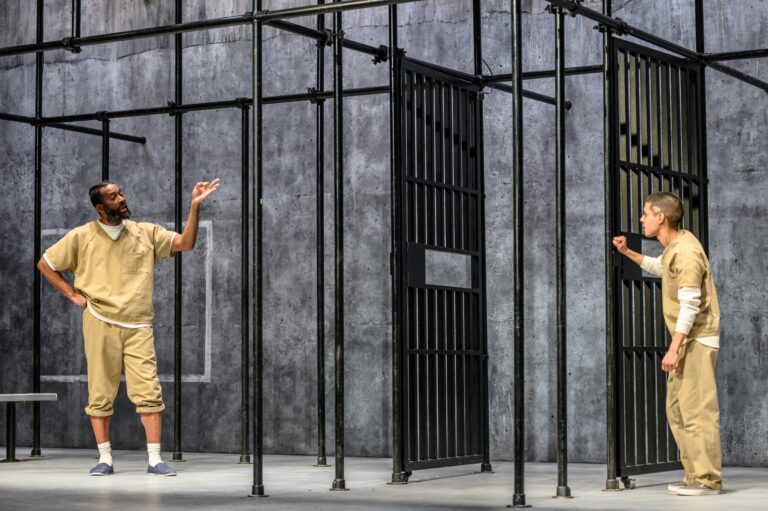
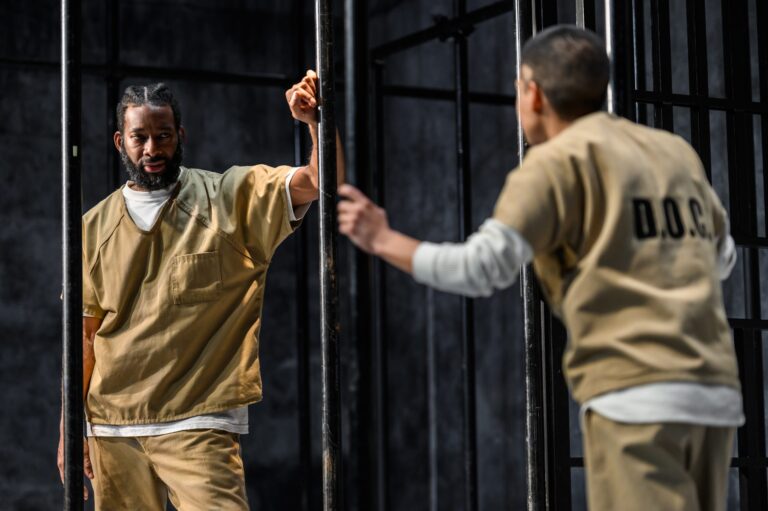
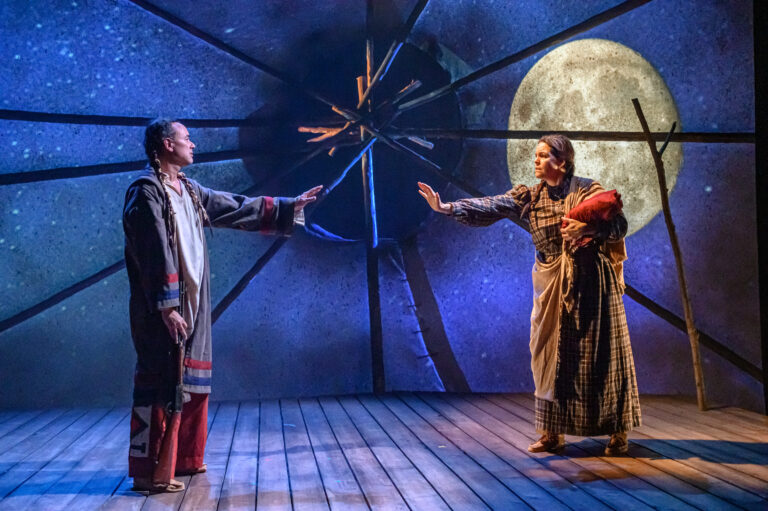
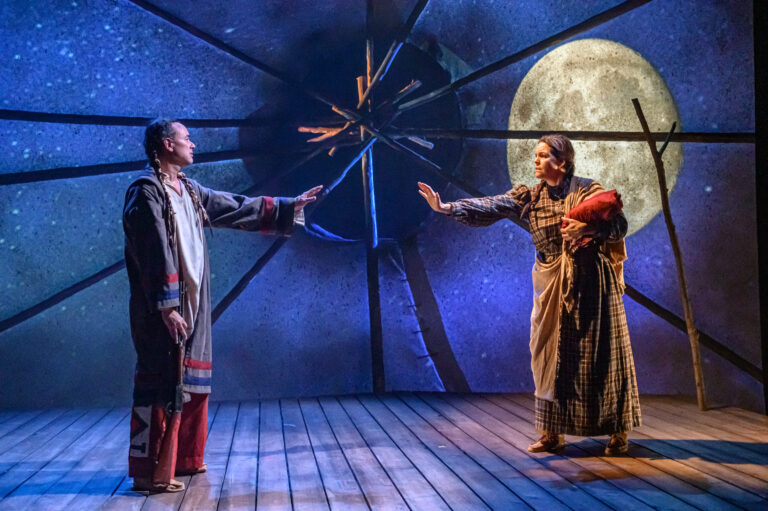
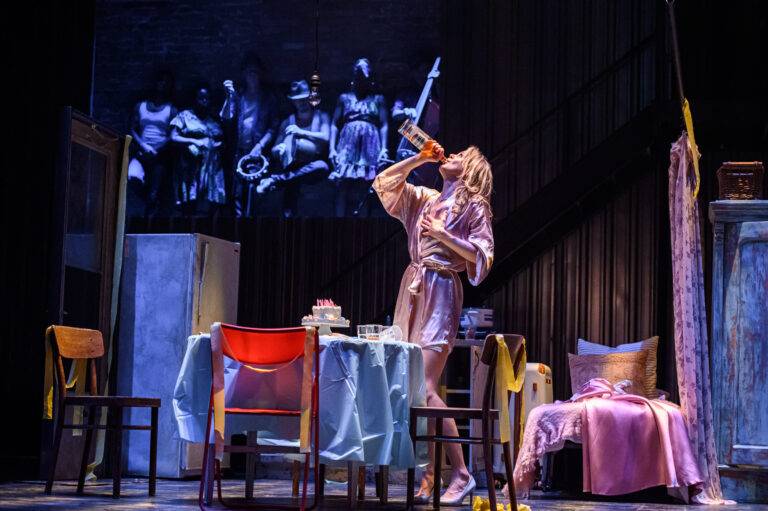
I’ll be honest, I didn’t have “Squidward and Spongebob fighting over what it means to be an immigrant” on my Bingo card … but I’m certainly not complaining!
Bravo to the young critics! An excellent starts to six promising careers.